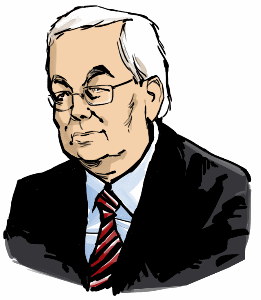© Gunnar Tómasson
5. nóvember 2017
# I
9953 = Schedae Araprestsfroda – Yfirskrift Íslendingabókar
3596 = Crymogæa
14155 = Brevis commentarius de Islandia
6442 = Skjöldunga saga
7000 = Microcosmos – Maður sem Ímynd Guðs
2600 = FINIS
43746
# II
6257 = Mörðr hét maðr.
12685 = Höfðingjaskipti varð í Nóregi.
11274 = Fara menn við þat heim af þingi.
13530 = Ok lýk ek þar Brennu-Njálssögu.
43746
# III
1 = Monad
6442 = Skjöldunga saga (Skjöldr = Meyjarhaft)
11359 = Snorri Sturluson
9814 = Sturla Þórðarson
27616
# IV
21615 = Láttu rita hér við Gauks sögu Trandilssonar. (Tilla sögu Píkusonar)¹
1 = Monad
7000 = Microcosmos – Maður sem Ímynd Guðs
27616
# V
13600 = Mér er sagt at herra Grímr eigi hana.¹
1516 = Kain
6500 = Þríhyrningr
7000 = Microcosmos – Maður sem Ímynd Guðs
28616
# VI
17616 = EL INGENIOSO HIDALGO DON QVIXOTE DE LA MANCHA – Upphaflegur spænskur titill.
4000 = Logandi Sverð – Sköpunarmáttur Alheims
7000 = Microcosmos – Maður sem Ímynd Guðs
28616
# VII
9010 = Petrus Romanus – The Last Pope – Malachy’s Prophecy
7000 = Microcosmos – Maður sem Ímynd Guðs
12606 = Þorvarðr Þórarinsson
28616
***
Reiknivél sem umbreytir bókstöfum í tölugildi er hér:
http://www.light-of-truth.com/ciphersaga.htm
¹Neðanmálsgrein – Einar Ól. Sveinsson
(Njála, XXVI. kafli)
Saga hefur verið til af Gauki, því að í Möðruvallabók stendur, að lokinni Njálu: „Láttu rita hér við Gauks sögu Trandilssonar: mér er sagt at [herra] Grímr eigi hana”.
WIKIPEDIA
Arngrímur Jónsson the Learned (Icelandic: Arngrímur Jónsson hinn lærði; 1568 – 27 June 1648) was an Icelandic scholar and an apologist. His father was Jón Jónsson, who died in 1591. Arngrímur studied in Copenhagen, completing his studies in 1589 and taking up a position back in Iceland as rector of the Latin school at the episcopal seat of Hólar in the same year.
In 1593 he published Brevis commentarius de Islandia, a „Defense of Iceland“ in Latin, in which he criticized the works of numerous authors who had written about the people and the country of Iceland. His main target was a poem by Gories Peerse, a merchant who had written an entertaining and somewhat slanderous poem about Icelandic geography and ethnography. Arngrímur also, however, criticized substantial works such as the Cosmographie of the German scholar Sebastian Münster.
The Brevis commentarius de Islandia was reprinted in 1598 in Richard Hakluyt’s Principal Navigations of the English Nation. This defense of Iceland and subsequent works were important for introducing European scholars to the ancient literature of Iceland and the richness of the manuscripts present there. In the context of the mounting conflicts between Denmark and Sweden, which saw both countries trying to establish historical precedents for their empire-building, it also played a formative role in the development of European nationalism, participating in the ethnographic insult and counterinsult by which European countries came to distinguish themselves in print. Through this and other writings–particularly his most important work, the Crymogæa of 1609–Arngrímur became an influential figure, inspiring leading Danish and Icelandic historians of subsequent generations, most prominently Ole Worm.
In his historical writings Arngrímur had access to texts no longer extant, most importantly a large fragment of Skjöldunga saga which was later lost completely. His works on legendary Danish and Swedish kings are the most important evidence for the contents of the lost saga.
Works
Brevis commentarius de Islandia
Crymogæa, a history of Iceland in three volumes[5]
Supplementum Historiæ Norvegicæ
Rerum Danicarum fragmenta
Ad Catalogum Regum Sveciæ, a quo danic: historiæ Norvegiæ, compendium incipit, annotanda
Anatome Blefkeniana
Eintal sálarinnar við sjálfa sig
Epistola pro patria defensoria
Apotribe virulentæ et atrocis calumniæ
Athanasia (in memory of Guðbrandur Þorláksson)
Specimen Islandiæ historicum
Gronlandia
Arngrimi Jonae opera latine conscripta, ed. by Jakob Benediktsson, Bibliotheca Arnamagnaeana, 9-12, 4 vols. (Copenhagen 1950-57)

 Gunnar Tómasson
Gunnar Tómasson